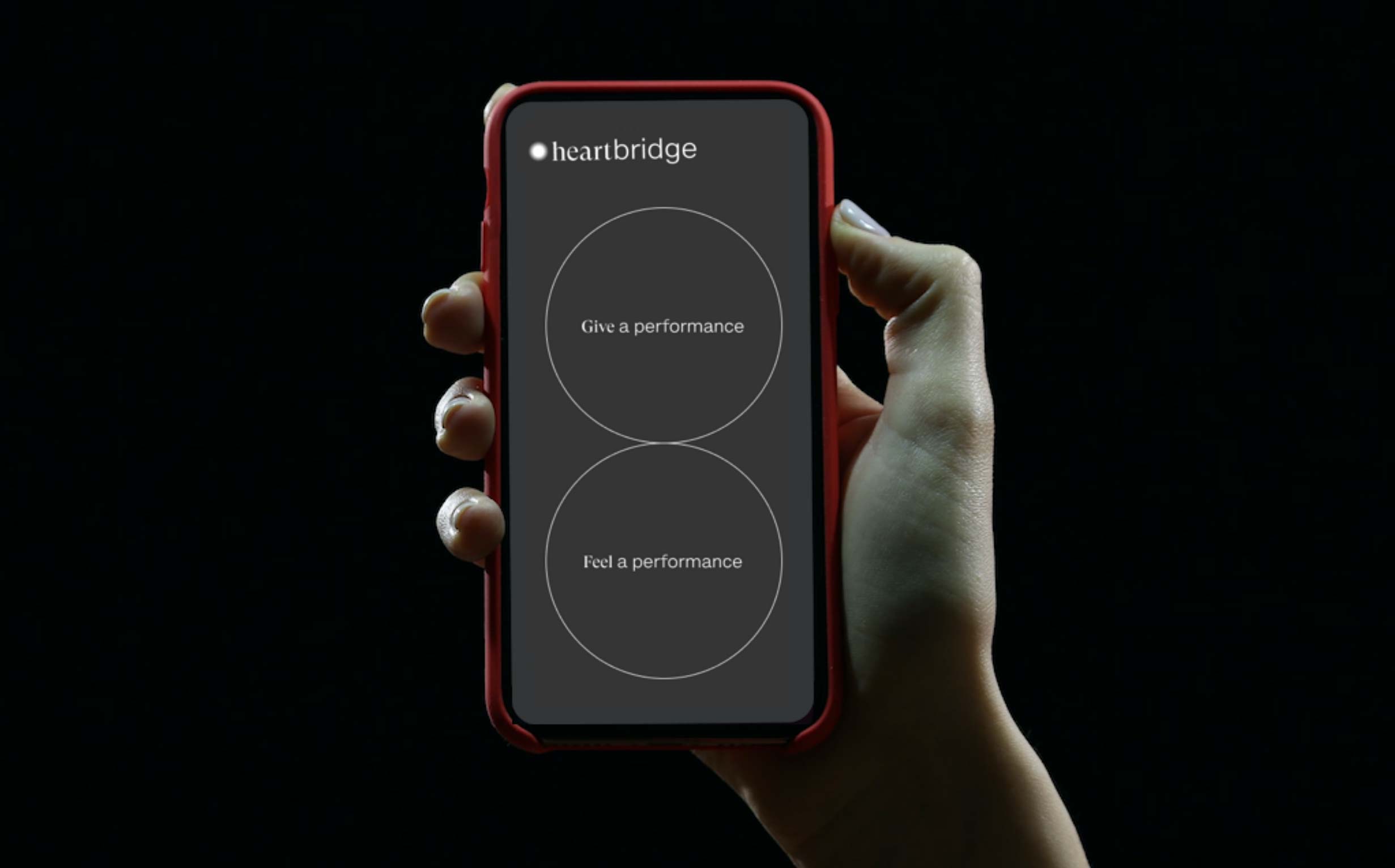Introducing Heartbridge: Transforming livestreams with the power of touch
It was eight weeks into the pandemic. Entire nations were in lockdown and the world’s theatres were dark. Artists from all corners of the industry had begun what would become an unprecedented pivot into livestreaming performance. Classical, experimental theatre, rock, electronic, dance—live music and the performing arts moved on-line.
I watched many of the performances – they helped me stay connected to the people and music that I love. With each livestream performance that I watched (and performed), the sensation that something was missing grew stronger. I missed the feeling of being in the theatre, the feeling of sound enveloping my body, the unique scent that is the collection of hundreds of colognes and perfumes melding together, the immediacy of being in the same space as the performer on the stage.
It was during one of these livestreams that it hit me, we’re missing the other senses! Your typical livestream on Instagram, Facebook, YouTube, etc. employs the use of only two senses: sight and hearing. The sense of touch, feeling the outside world with your body, is almost completely absent.
Heartbridge is a technology that brings the sense of touch to livestream. It’s an app for iOS that allows you to feel the actual heartbeat of a performer in real time, while they are performing. The concept is very simple, connect to a performance on Heartbridge and your phone will start vibrating in time with their heartbeat. The result is a sense of connection to another human being that is typically a part of only our most intimate moments—to feel someone’s heartbeat is to gain a window into their life.
How do performers link their heart beat to the app? By connecting a bluetooth heart rate monitor to their smartphone. These heart rate monitors, typically worn on the arm or around the chest, are affordable and easy to find online. For audio and video, performers continue to use the livestream platforms where they’ve already developed a following. This is not a play to become the next Facebook, this is about telling a great story.
Performers promote Heartbridge within their livestream marketing, sharing a QR Code that links the audience to their Heartstream. Before the performance, audiences take photo of the QR code with their smartphone, download the app and connect to the performer. That’s it.
While it’s in beta, Heartbridge will be completely free to use, for artists and audiences. Eventually, artists and producers will be able to charge for access to their heartstream. It’s crucial that we find ways for performers and companies to generate meaningful revenue through livestream performances.
For me, experiencing how other artists build Heartbridge into their performances is the most exciting part of this project. Think of Heartbridge as a completely new type of instrument. To invent the instrument is one thing, to compose for it is something entirely different. Who will be for Heartbridge what Beethoven was for the piano?
Visit Heartbridge.io today to join the beta and explore how the power of touch is transforming the livestream experience.


